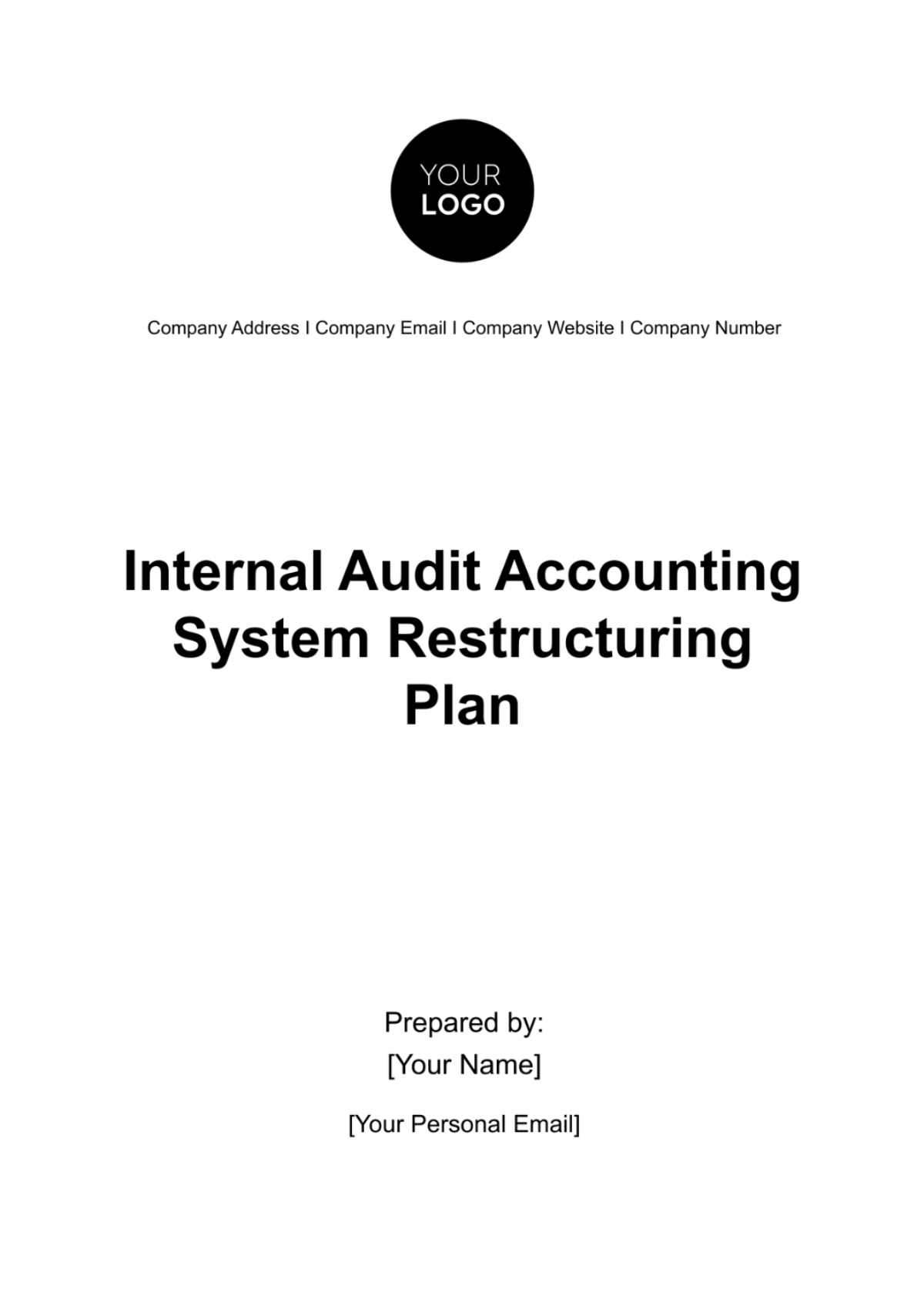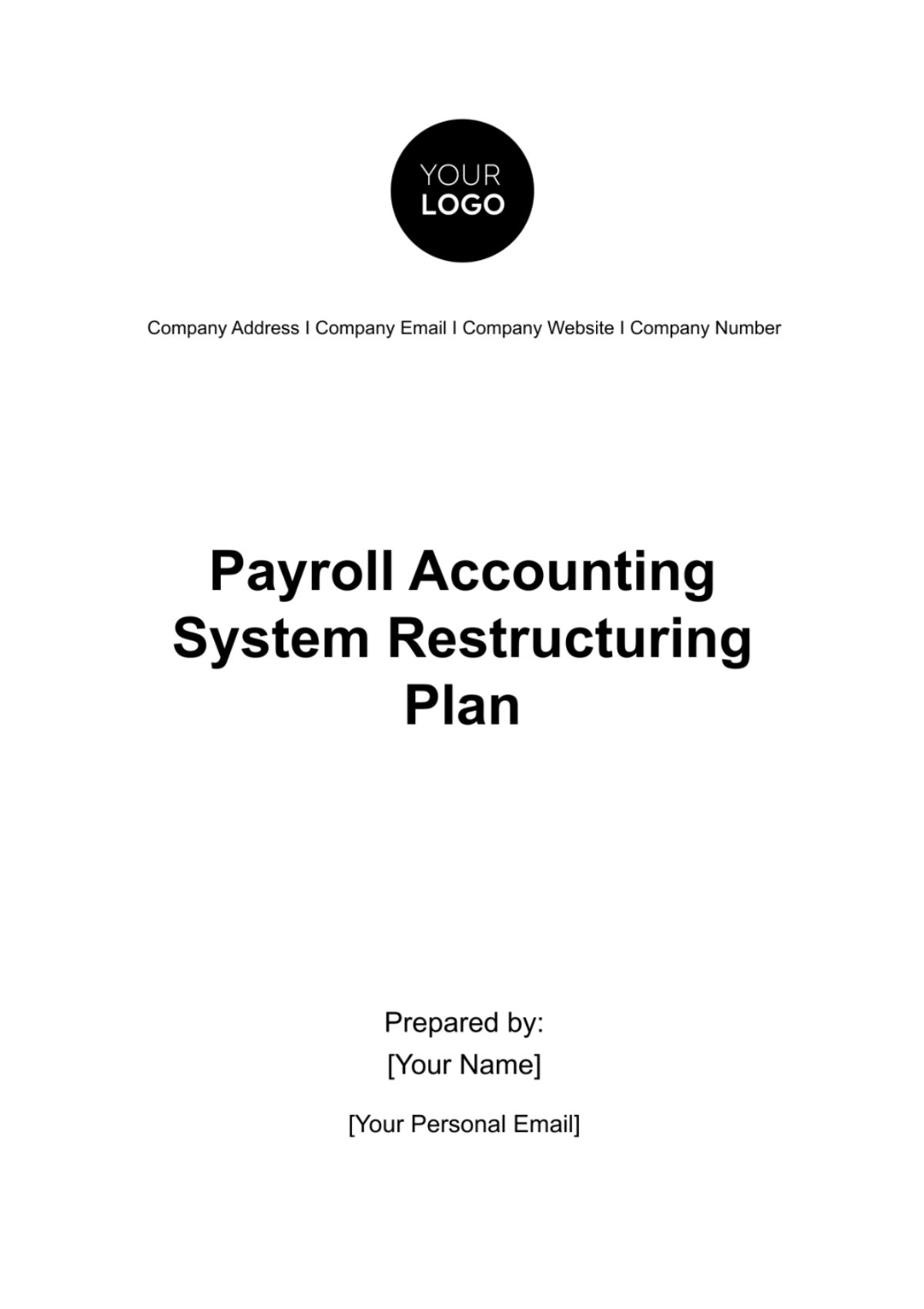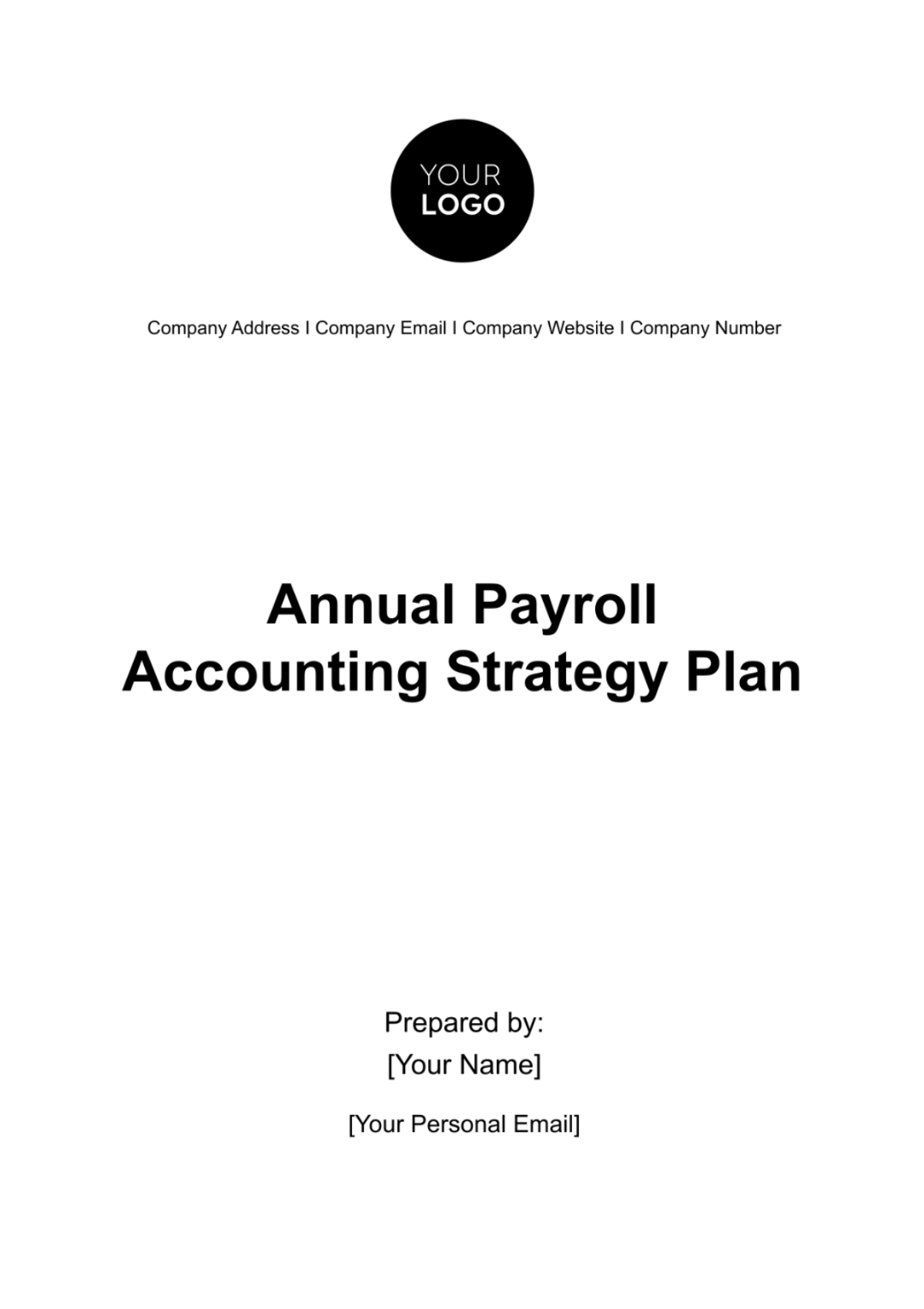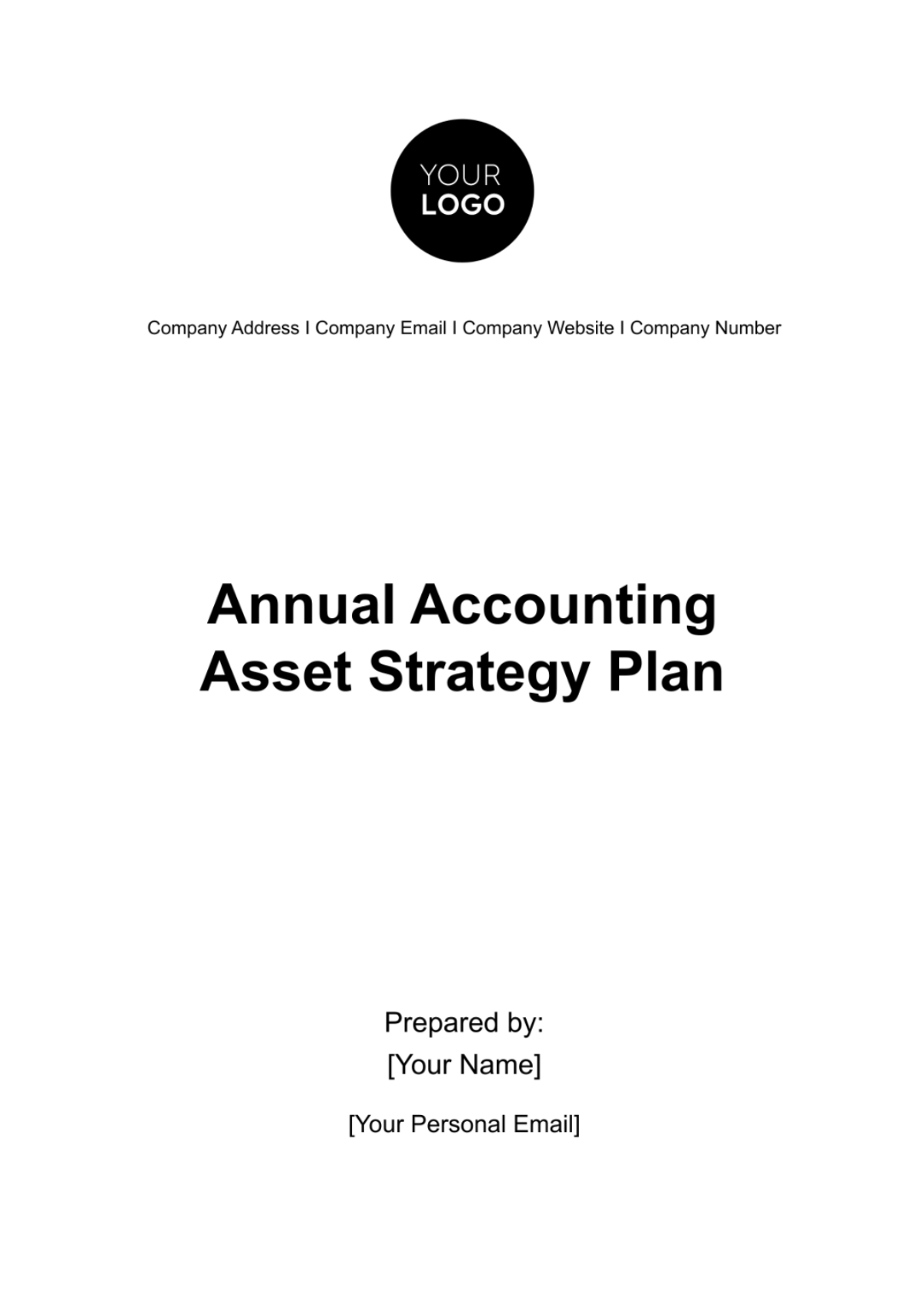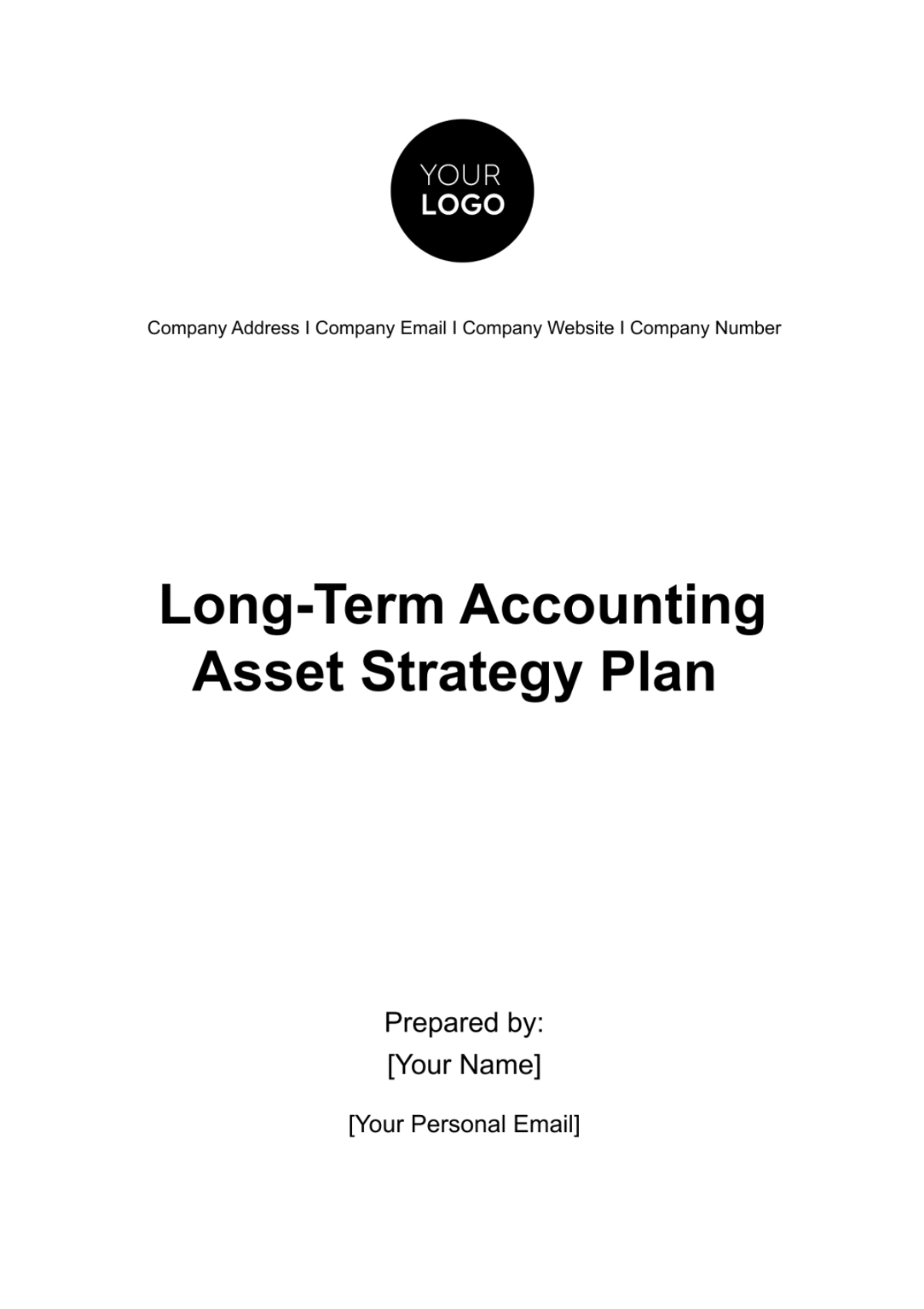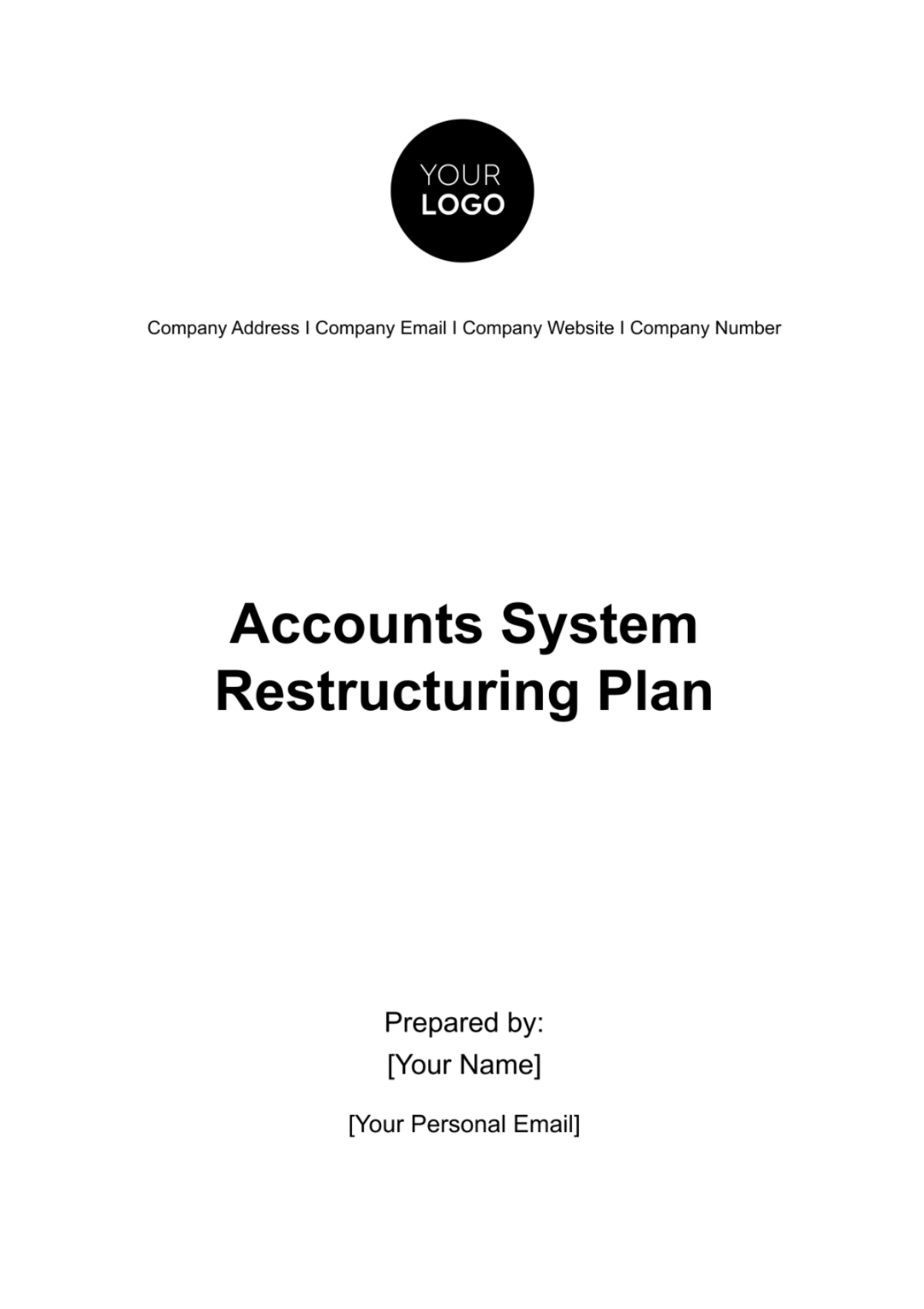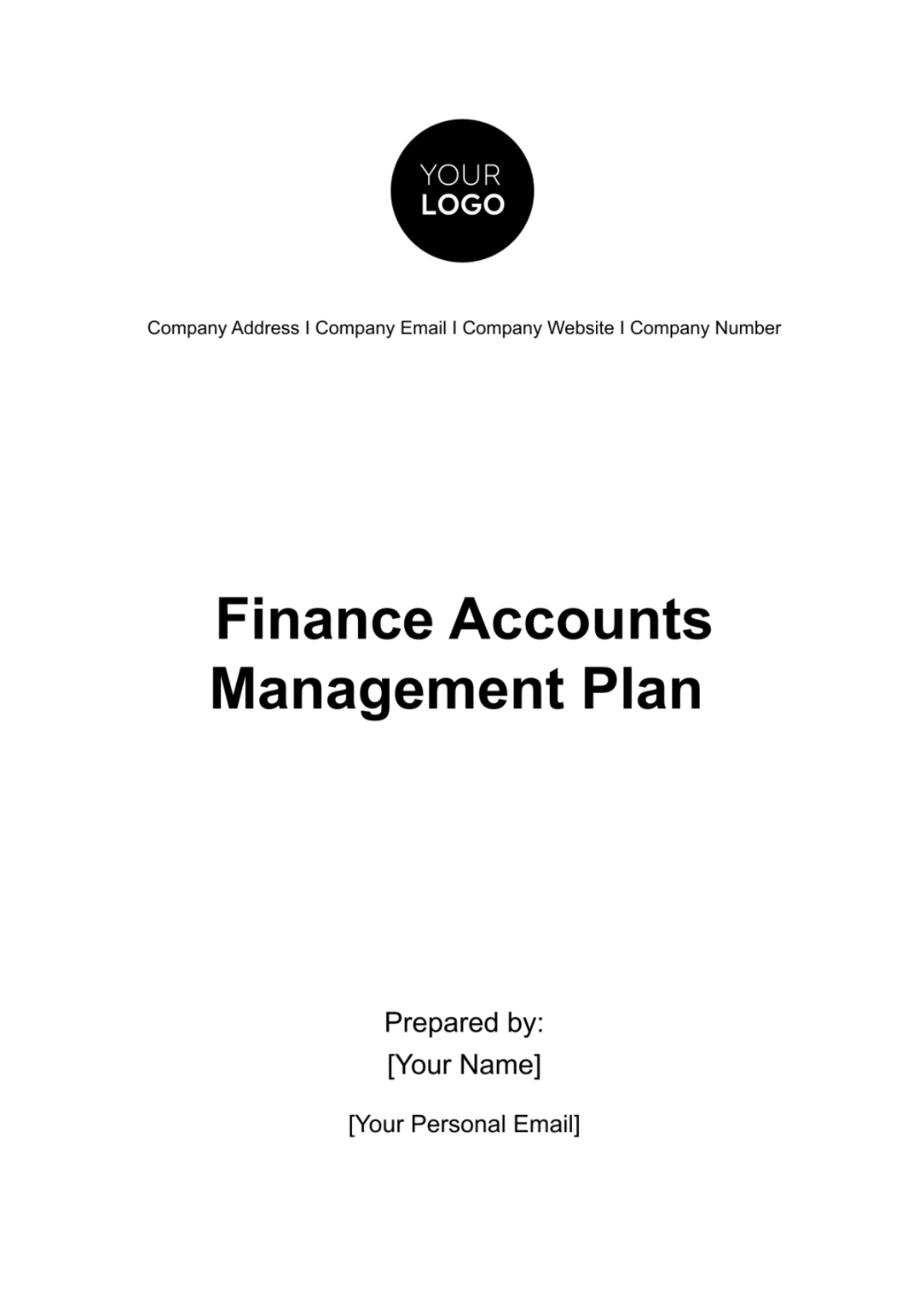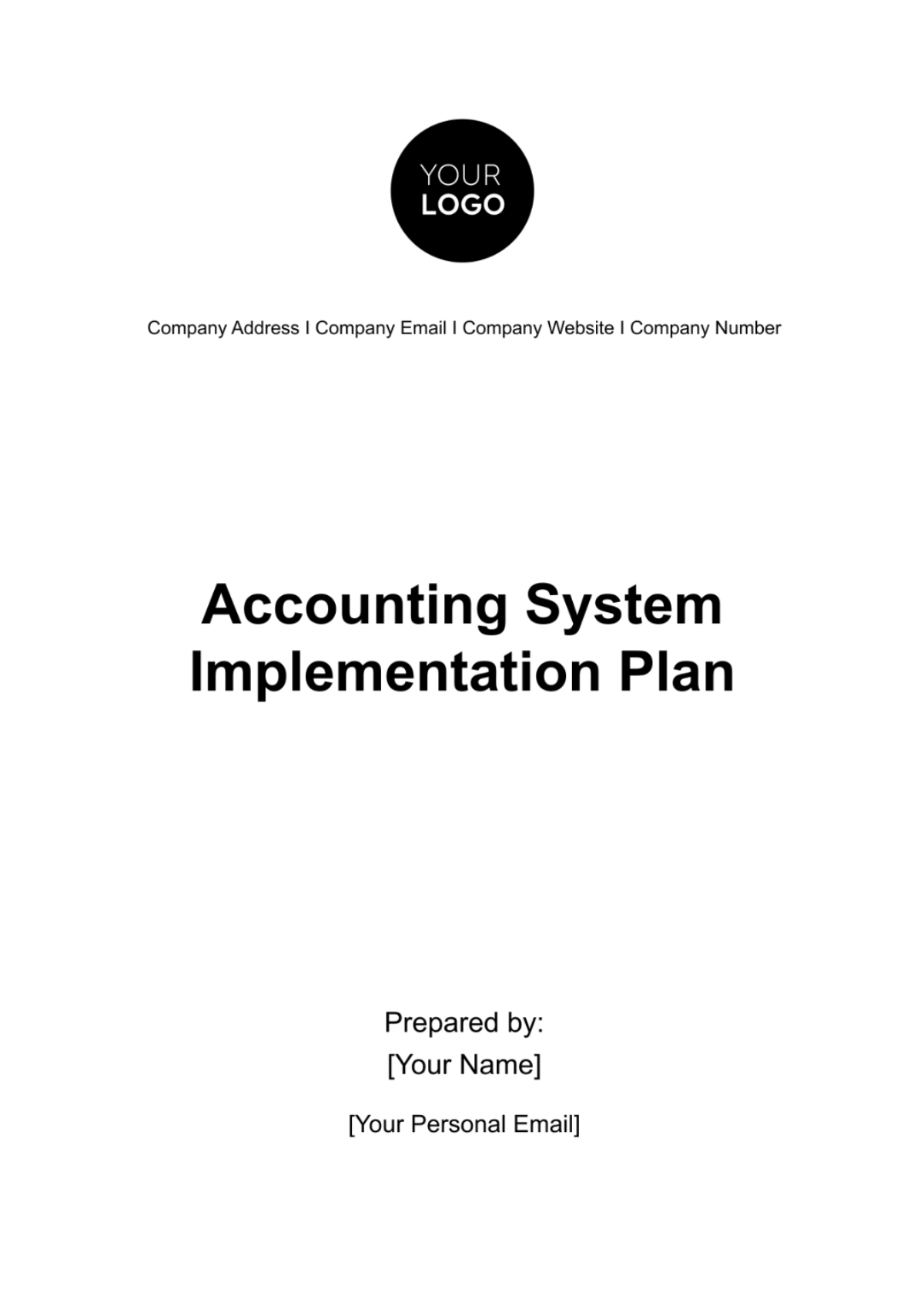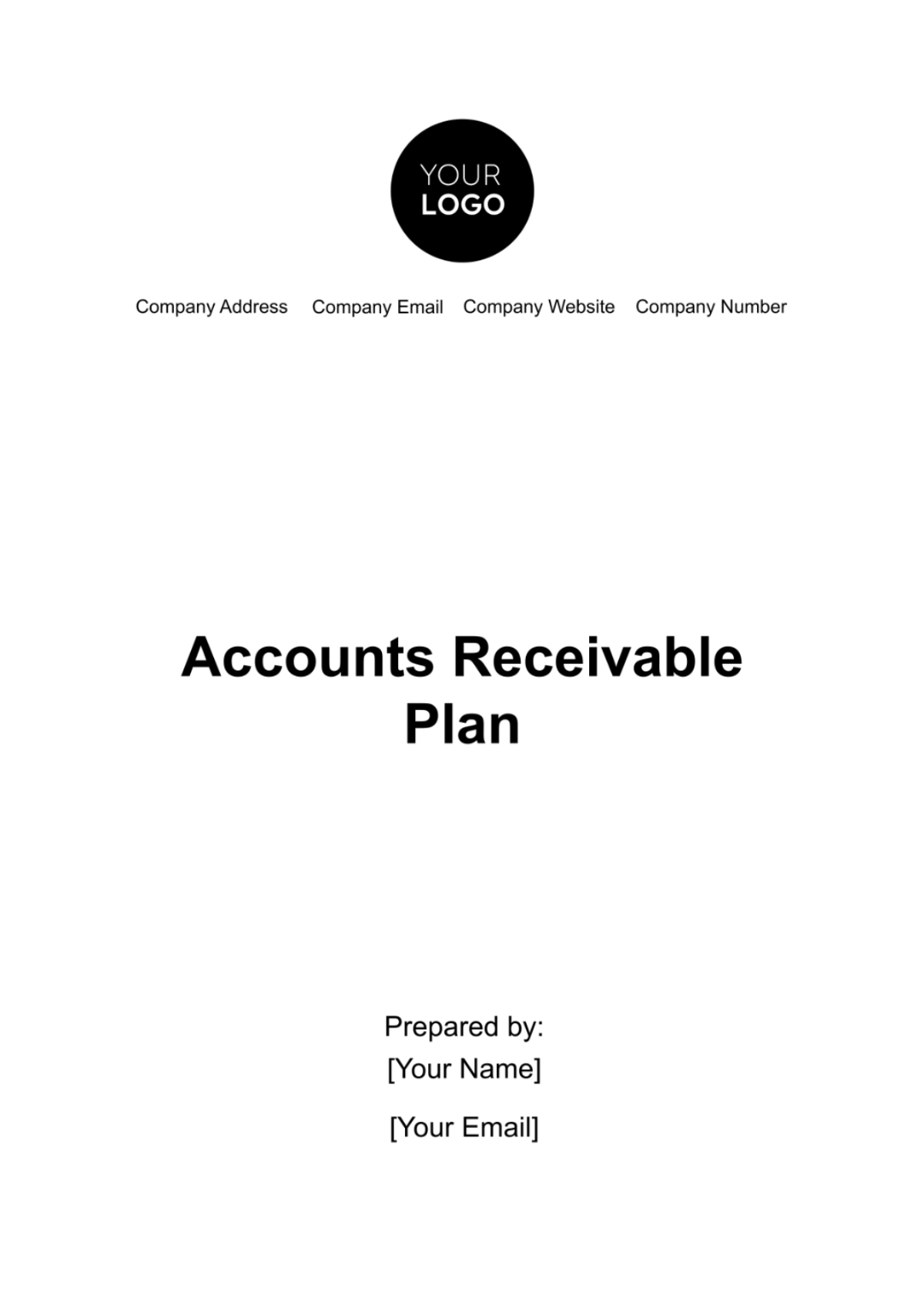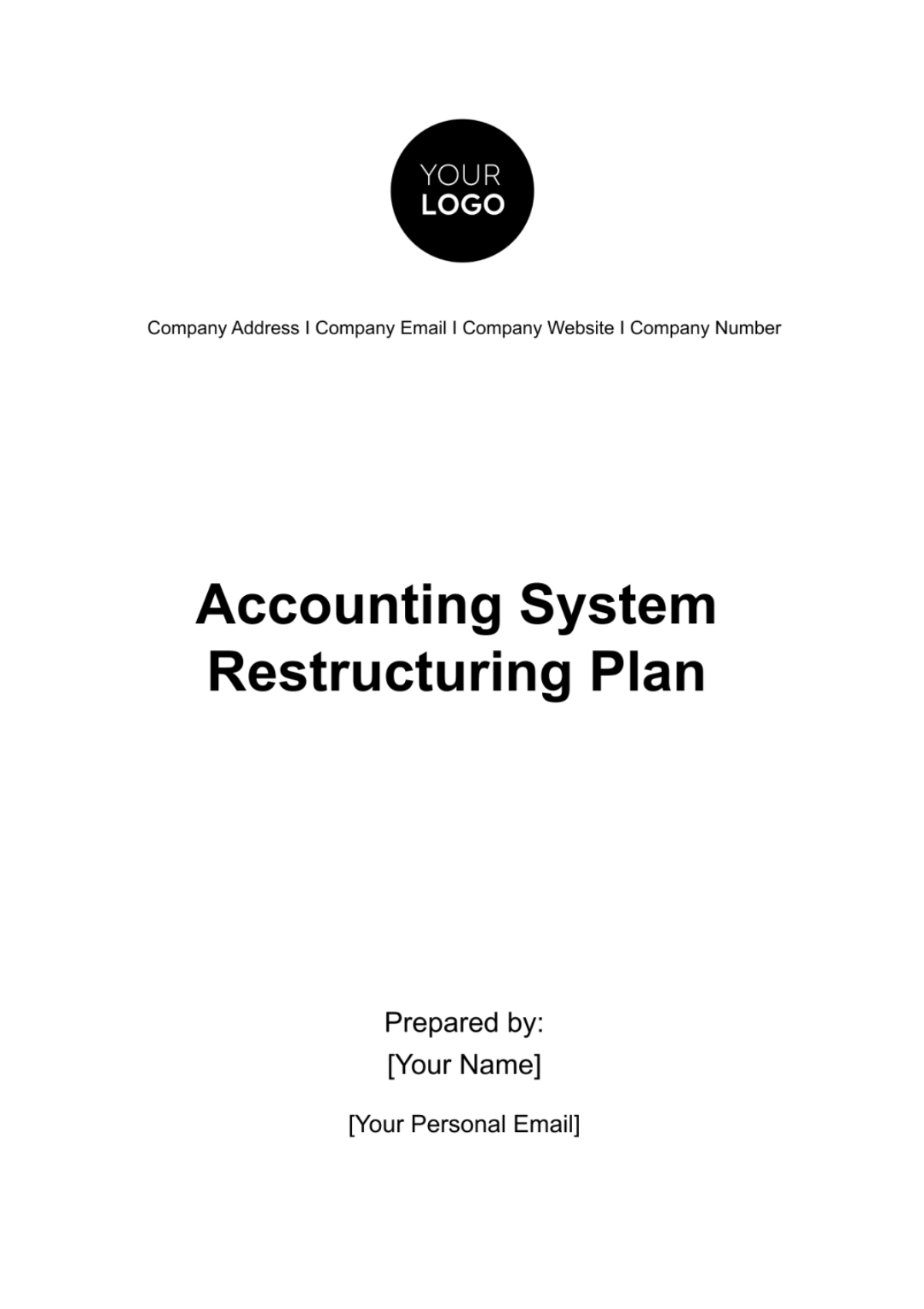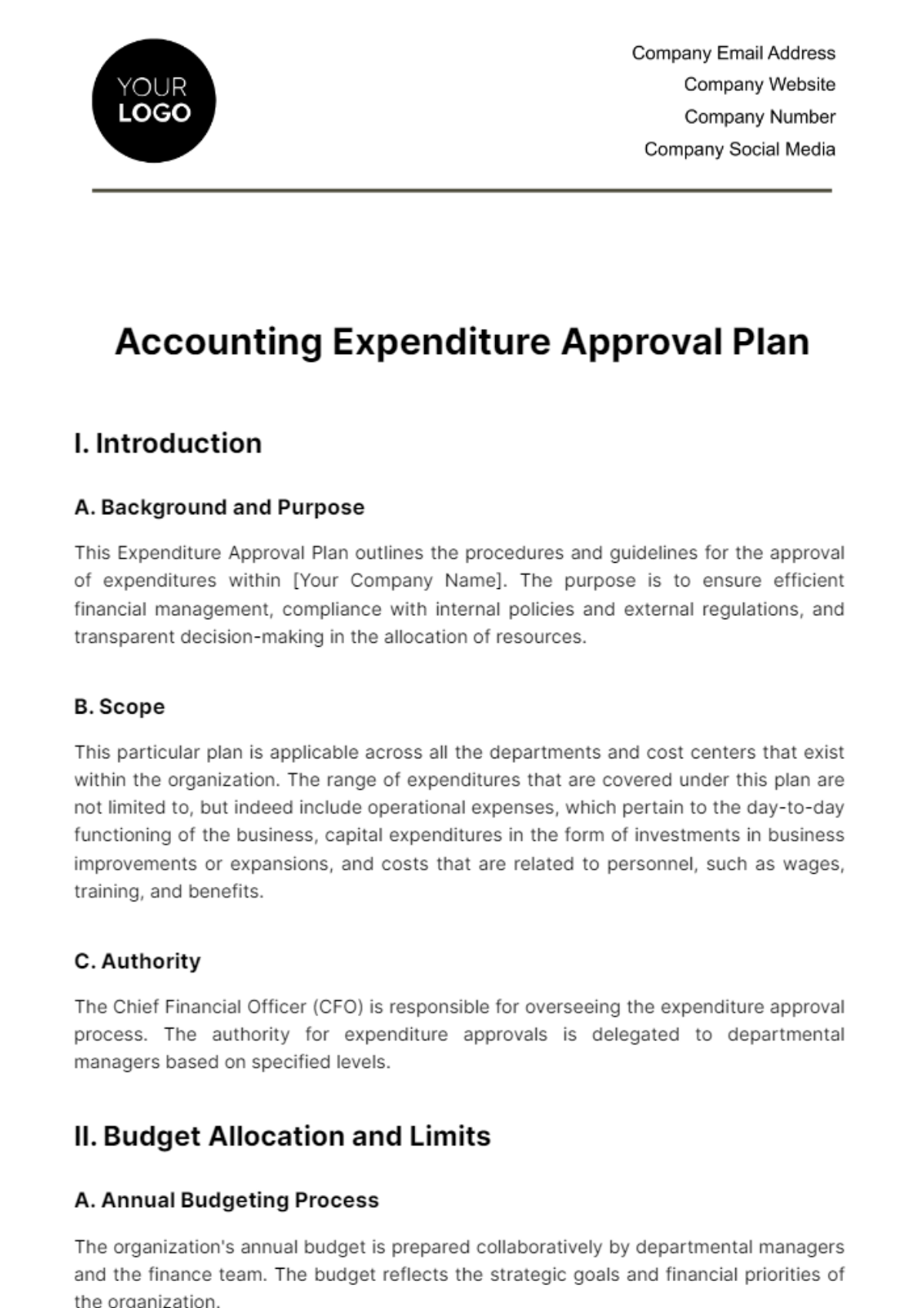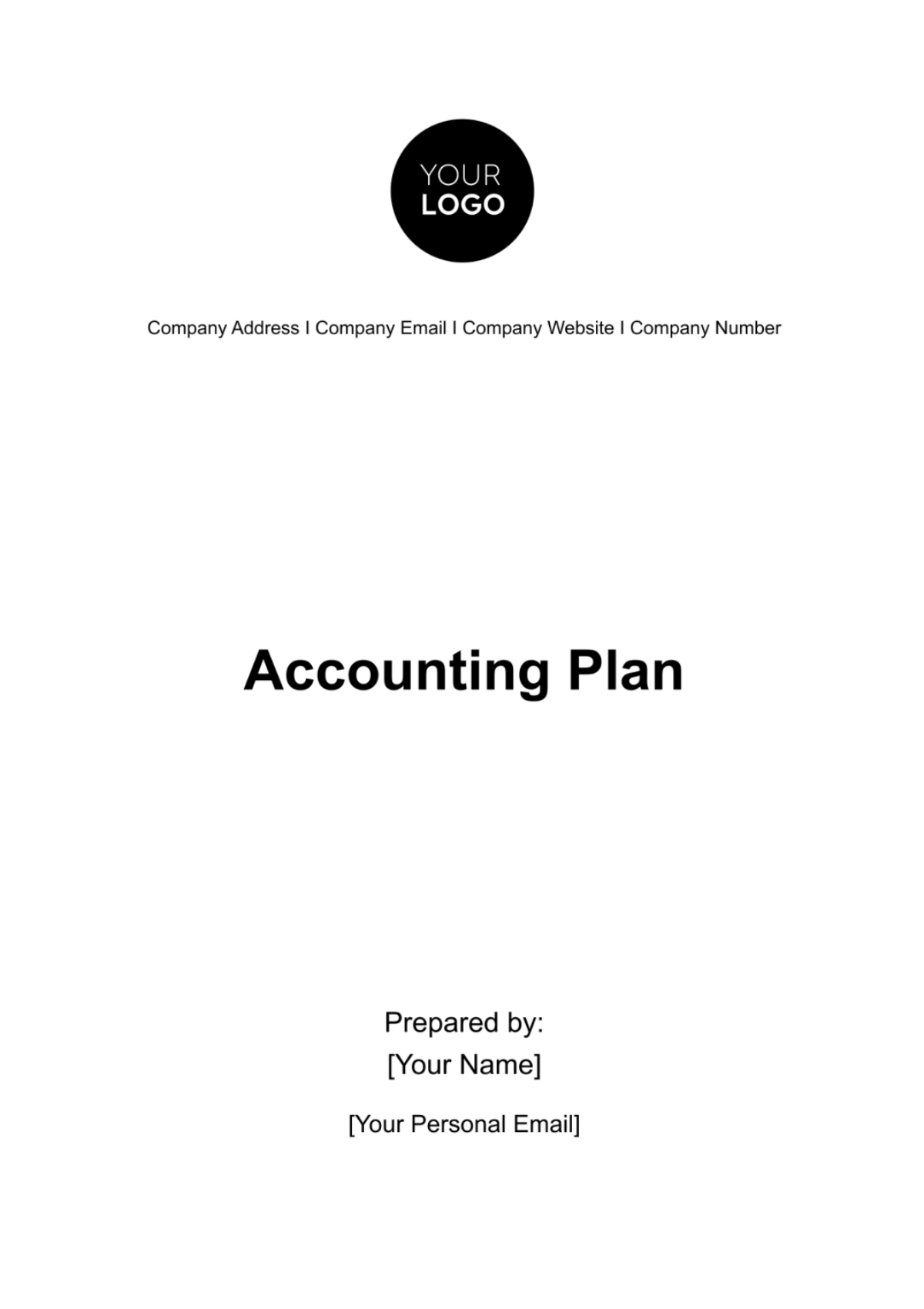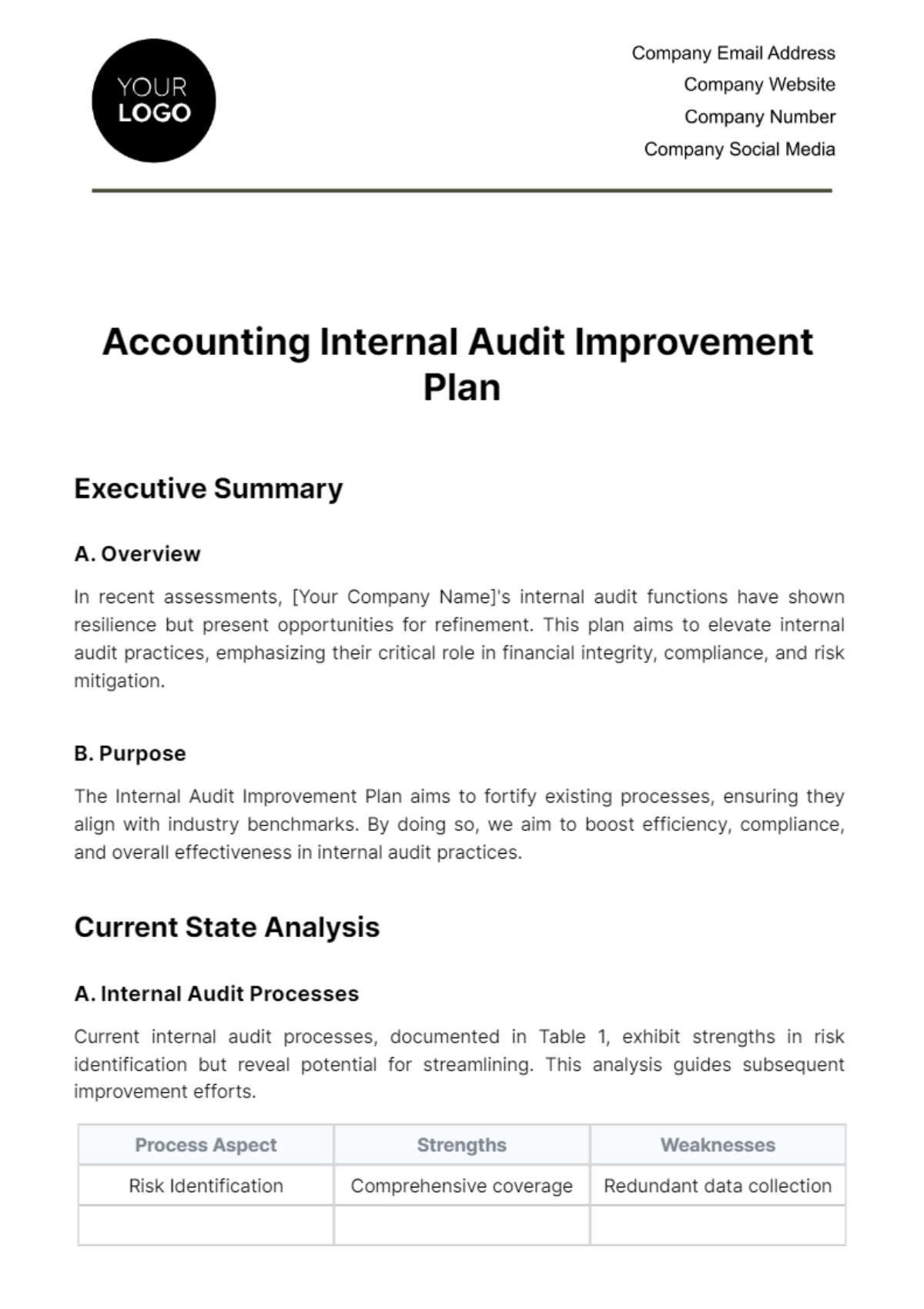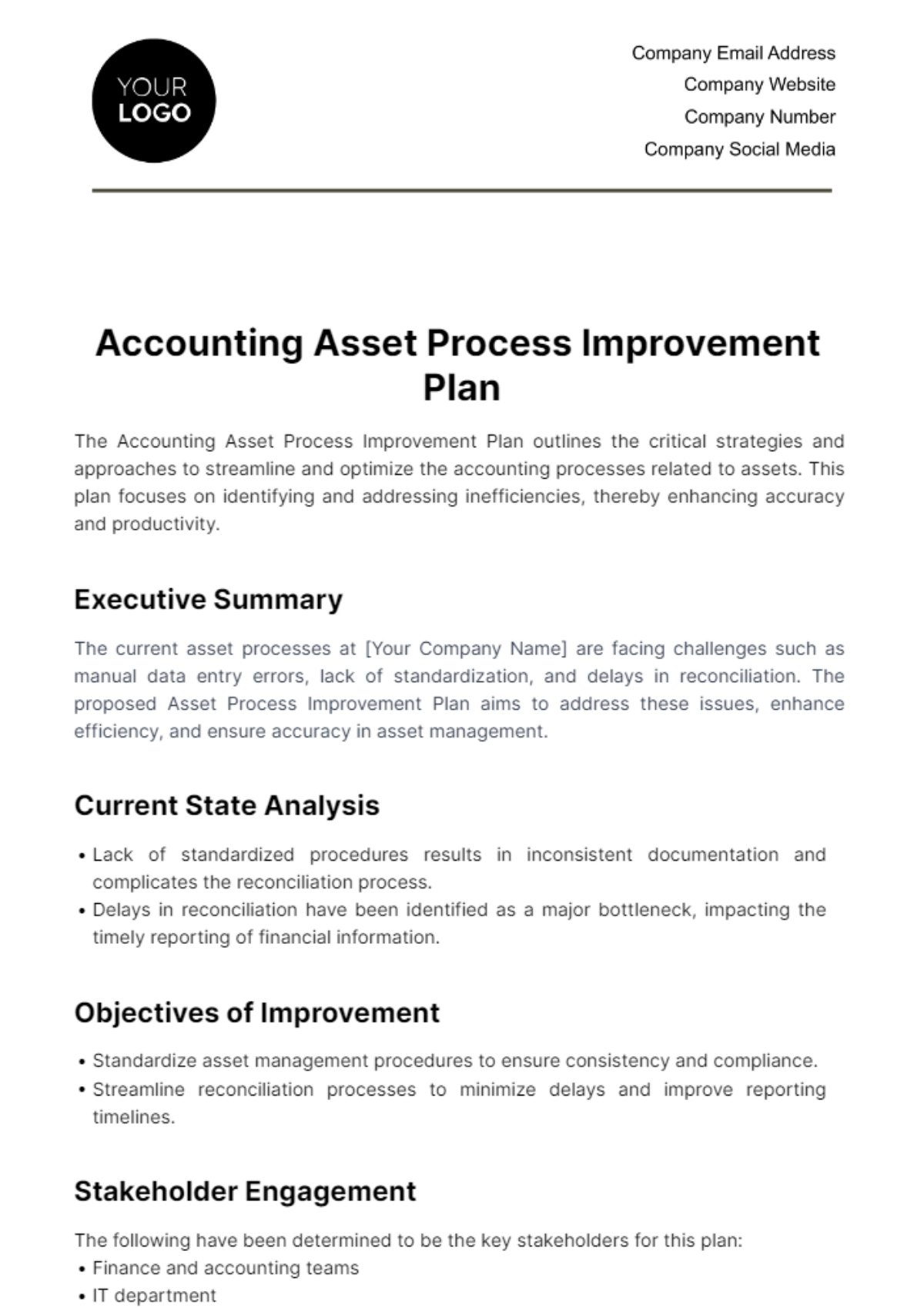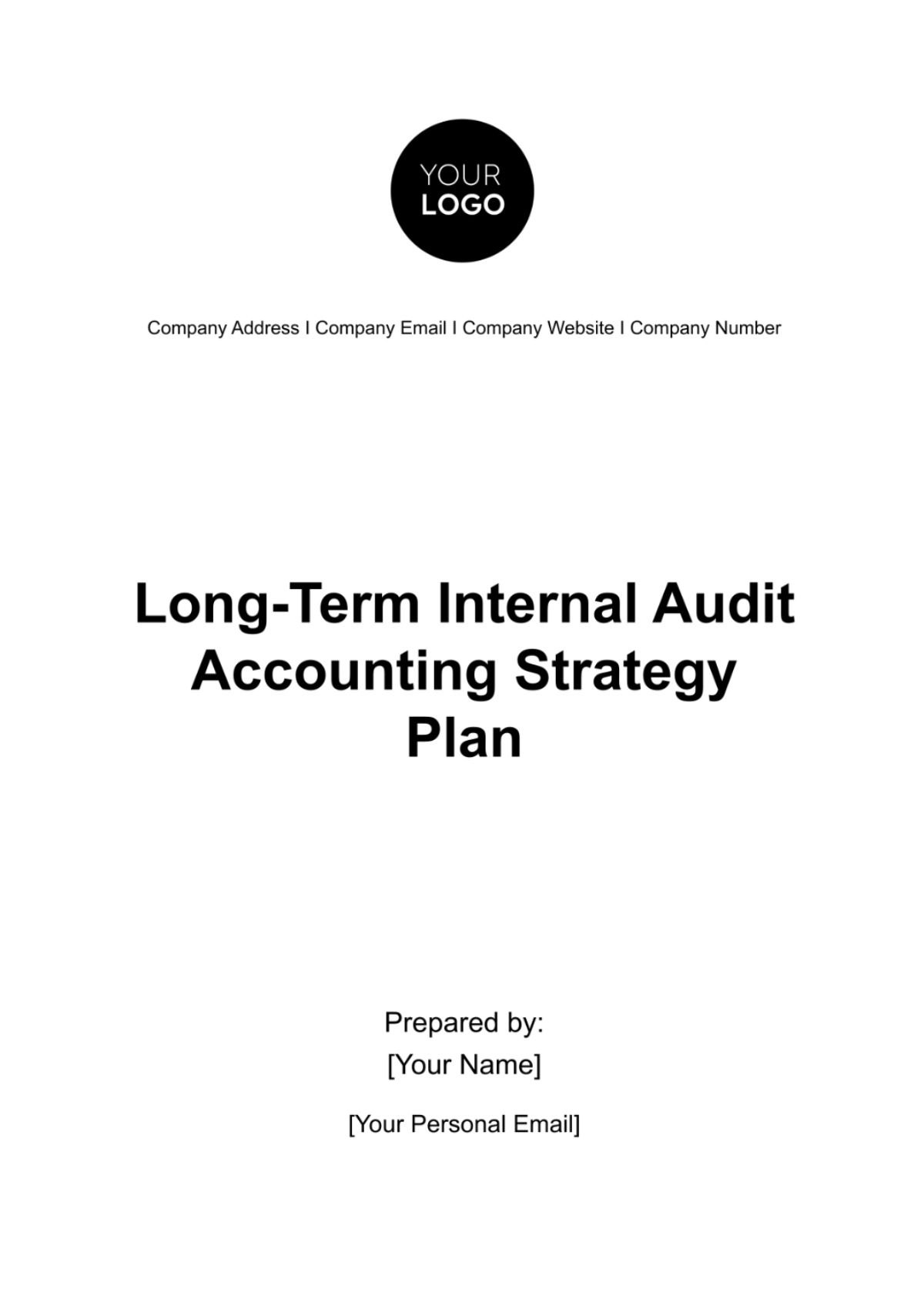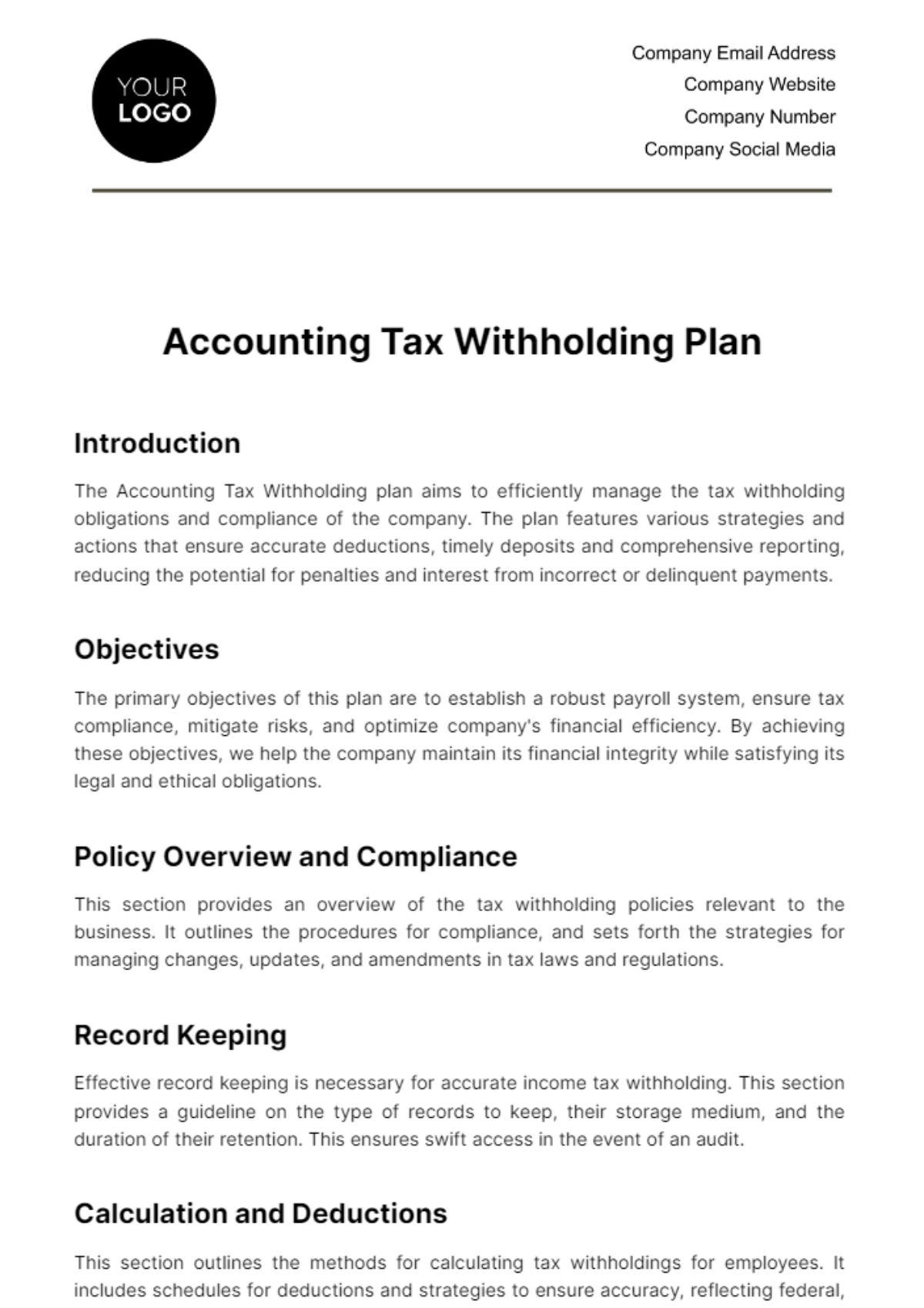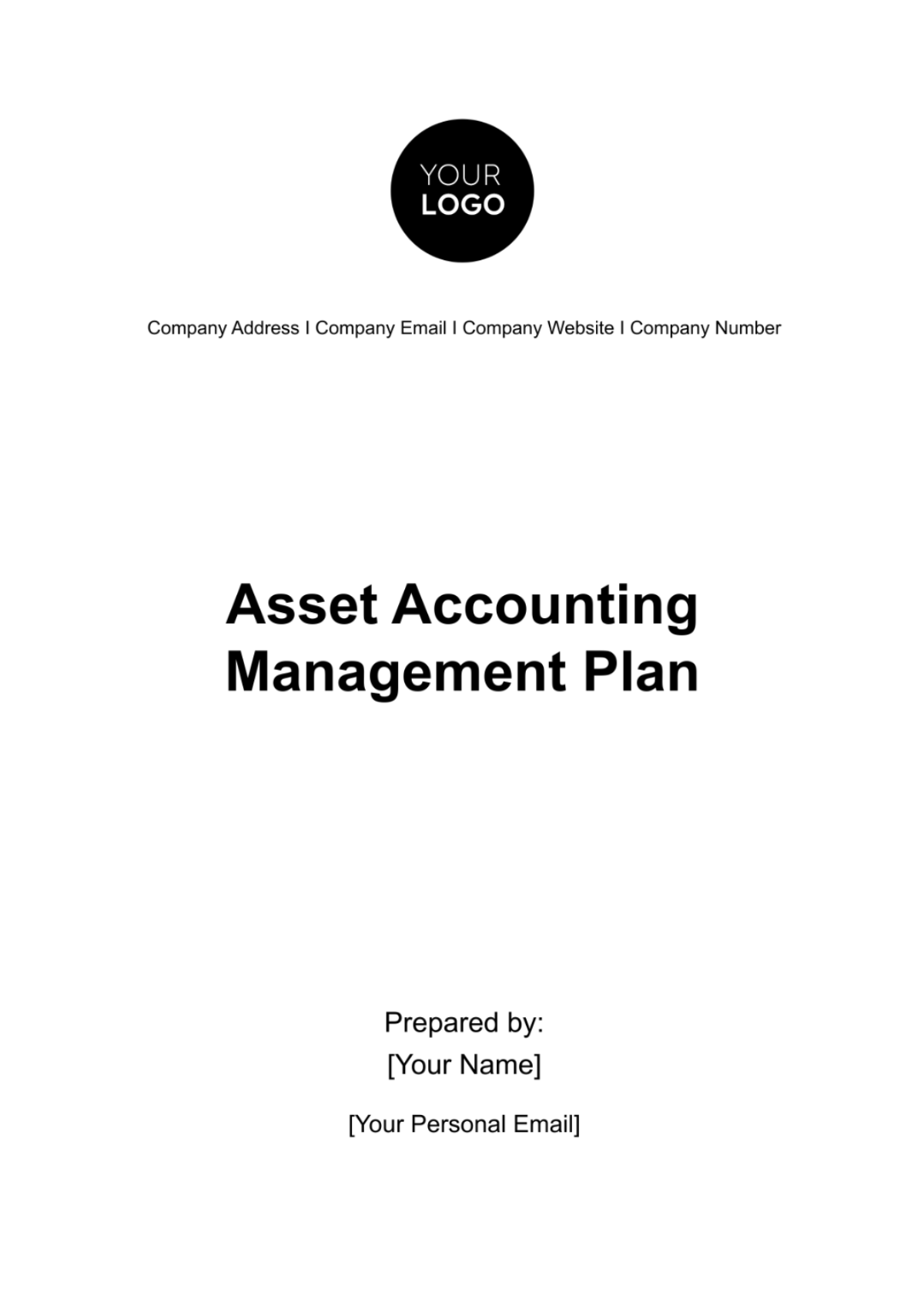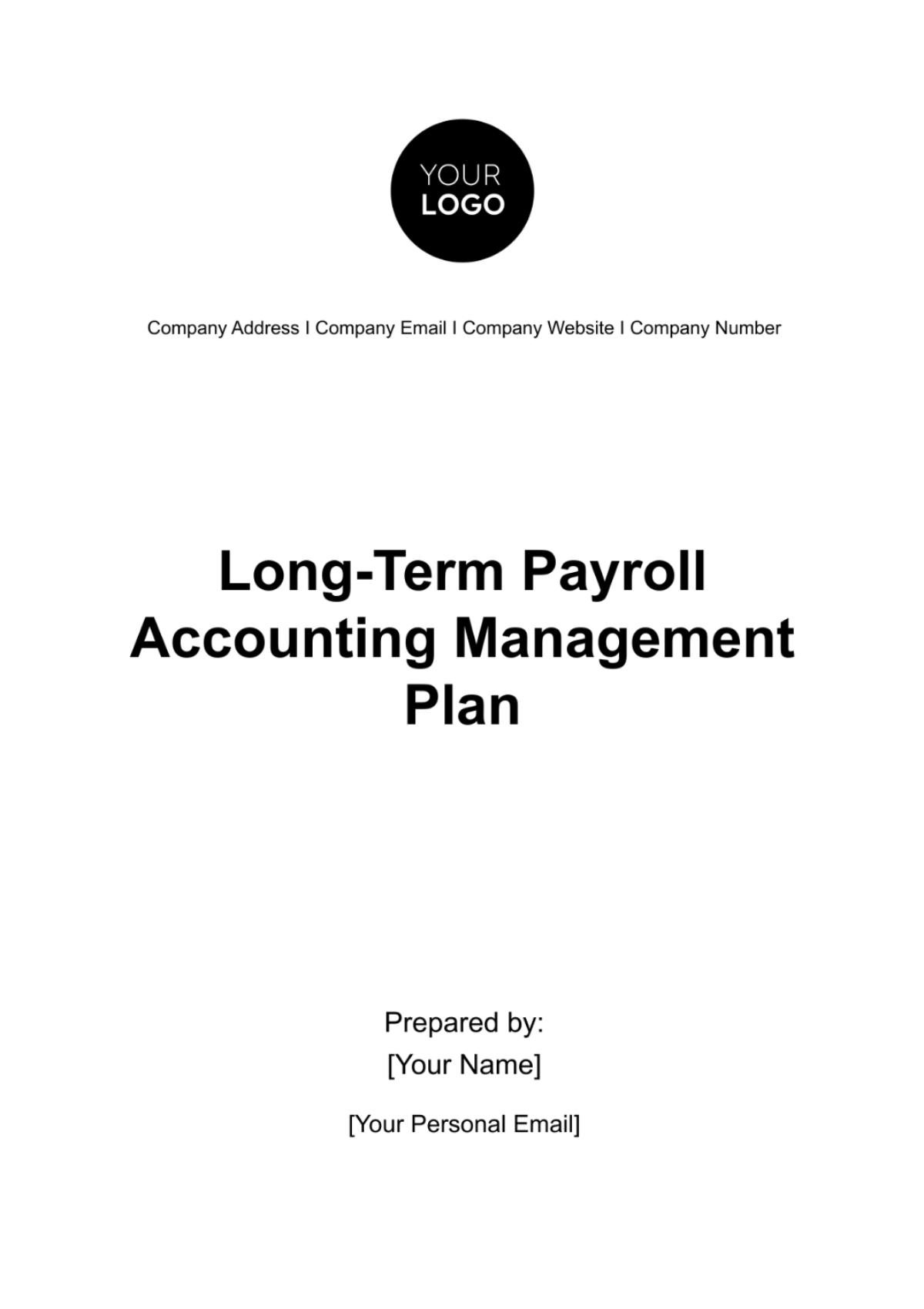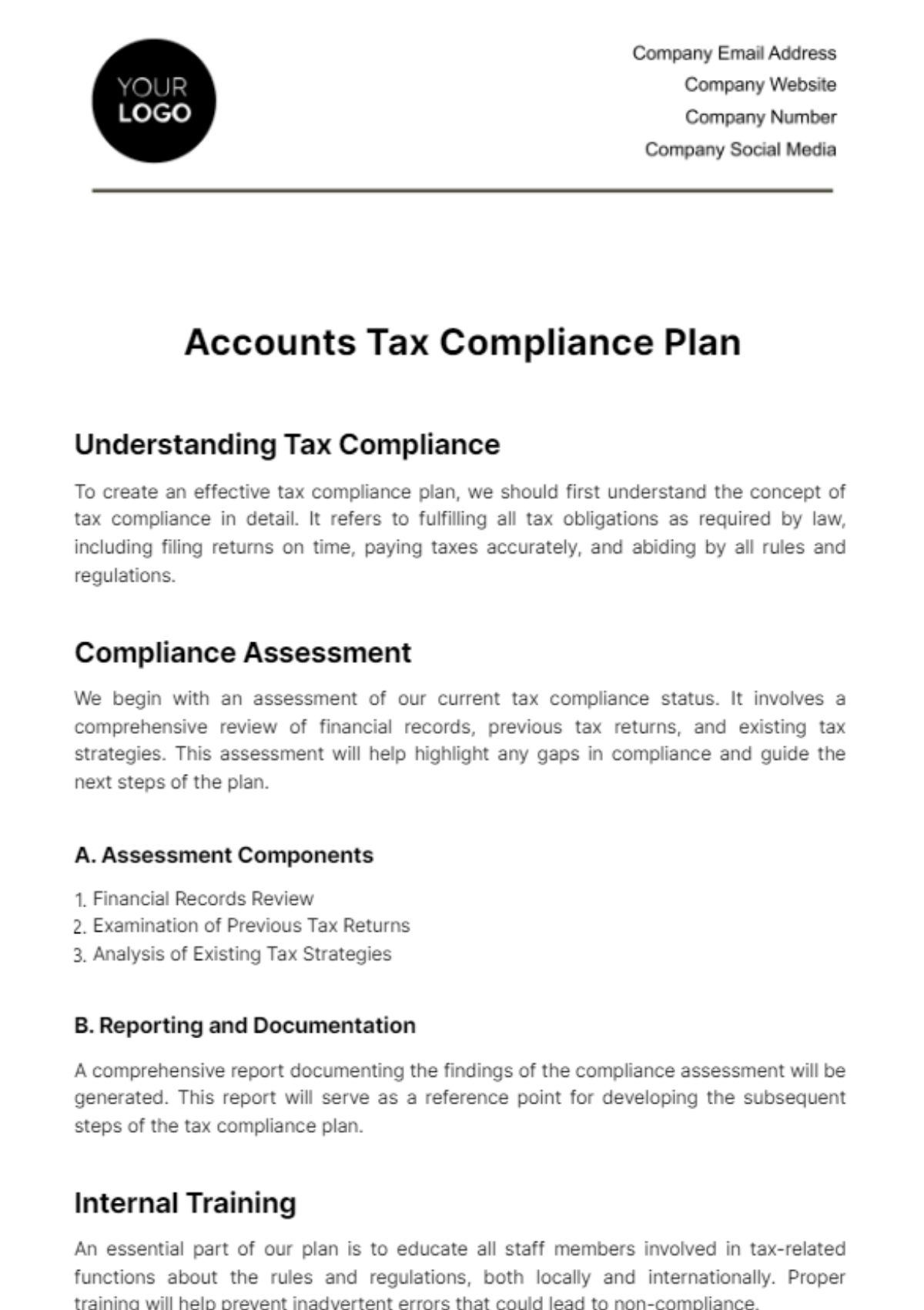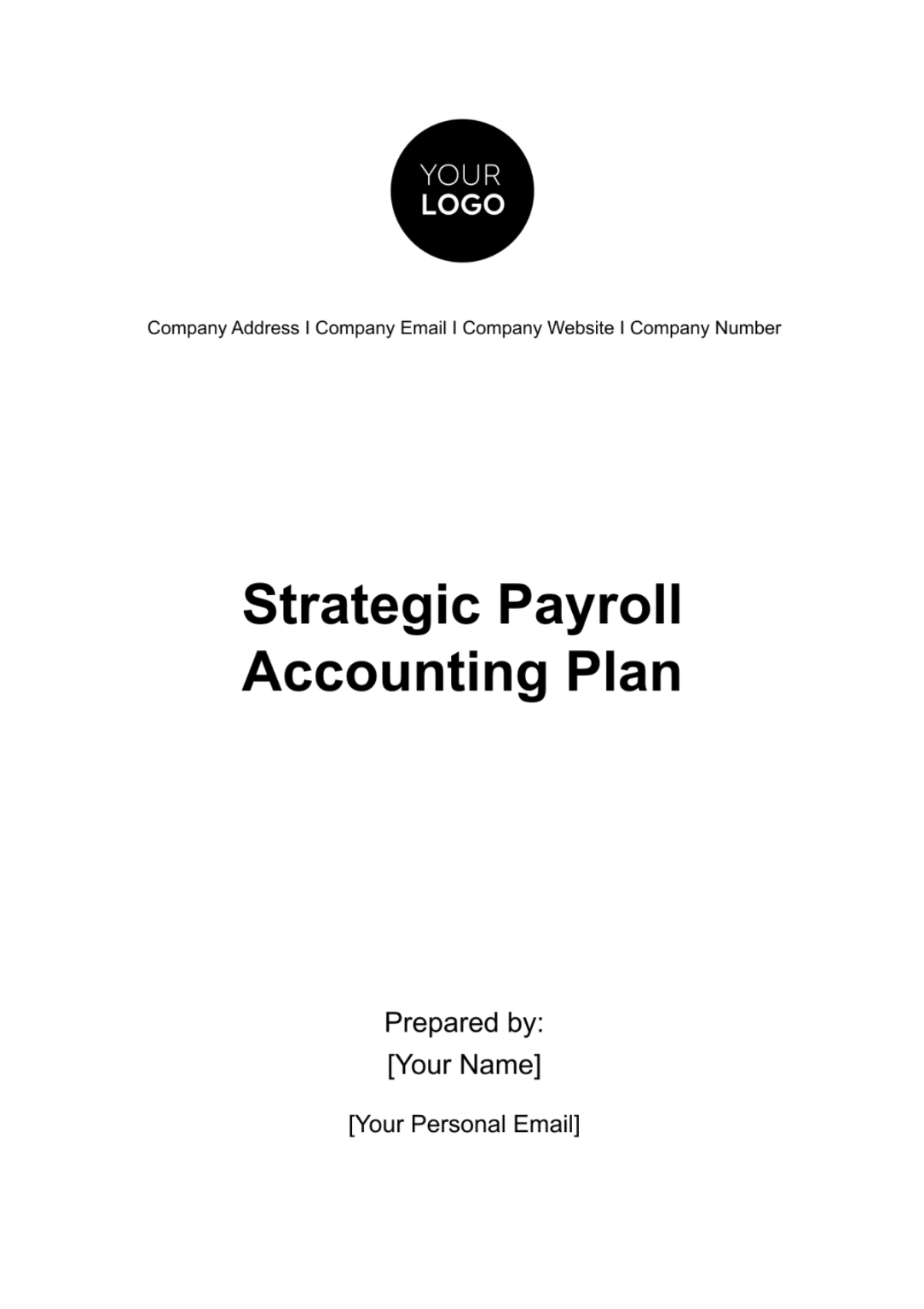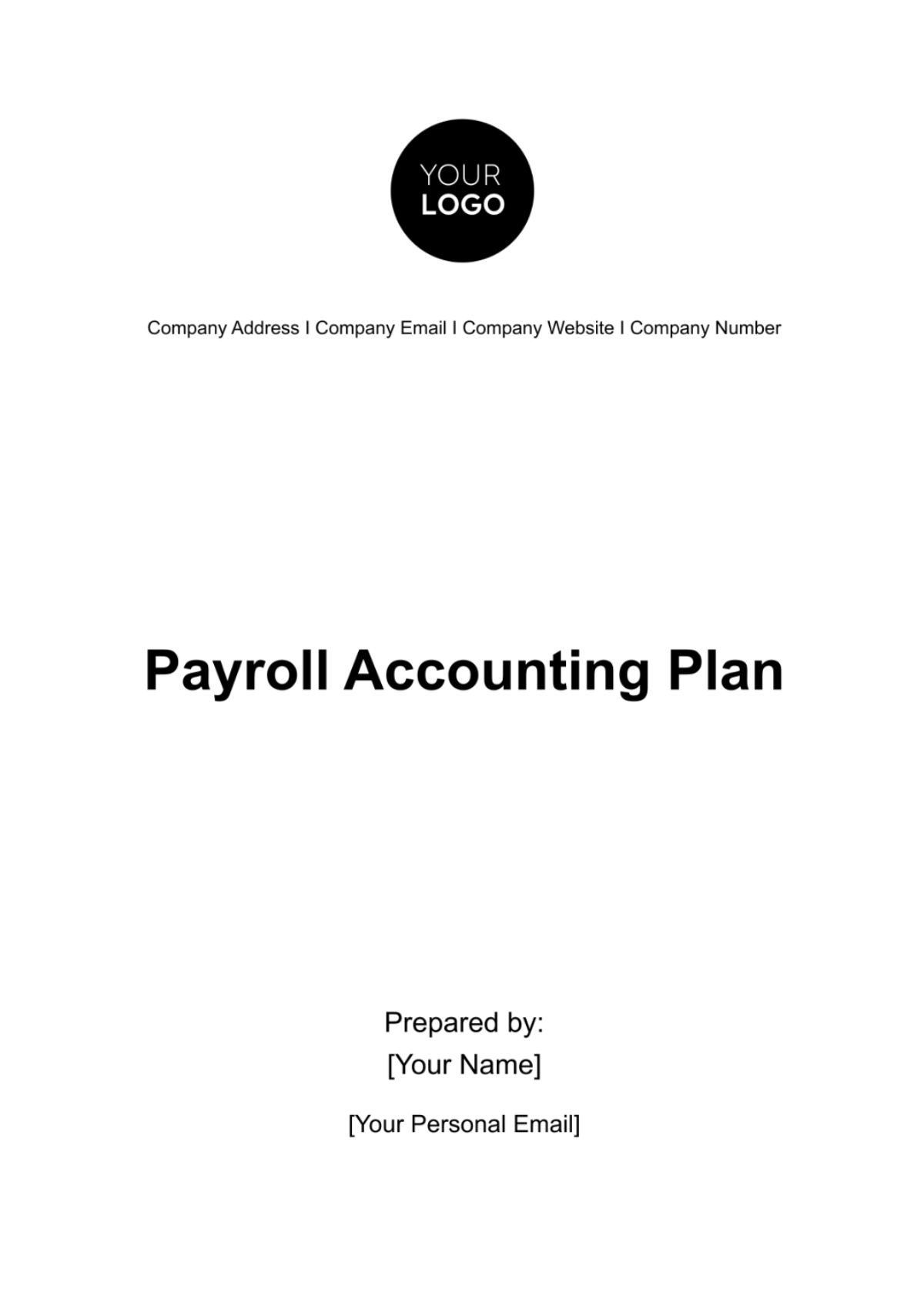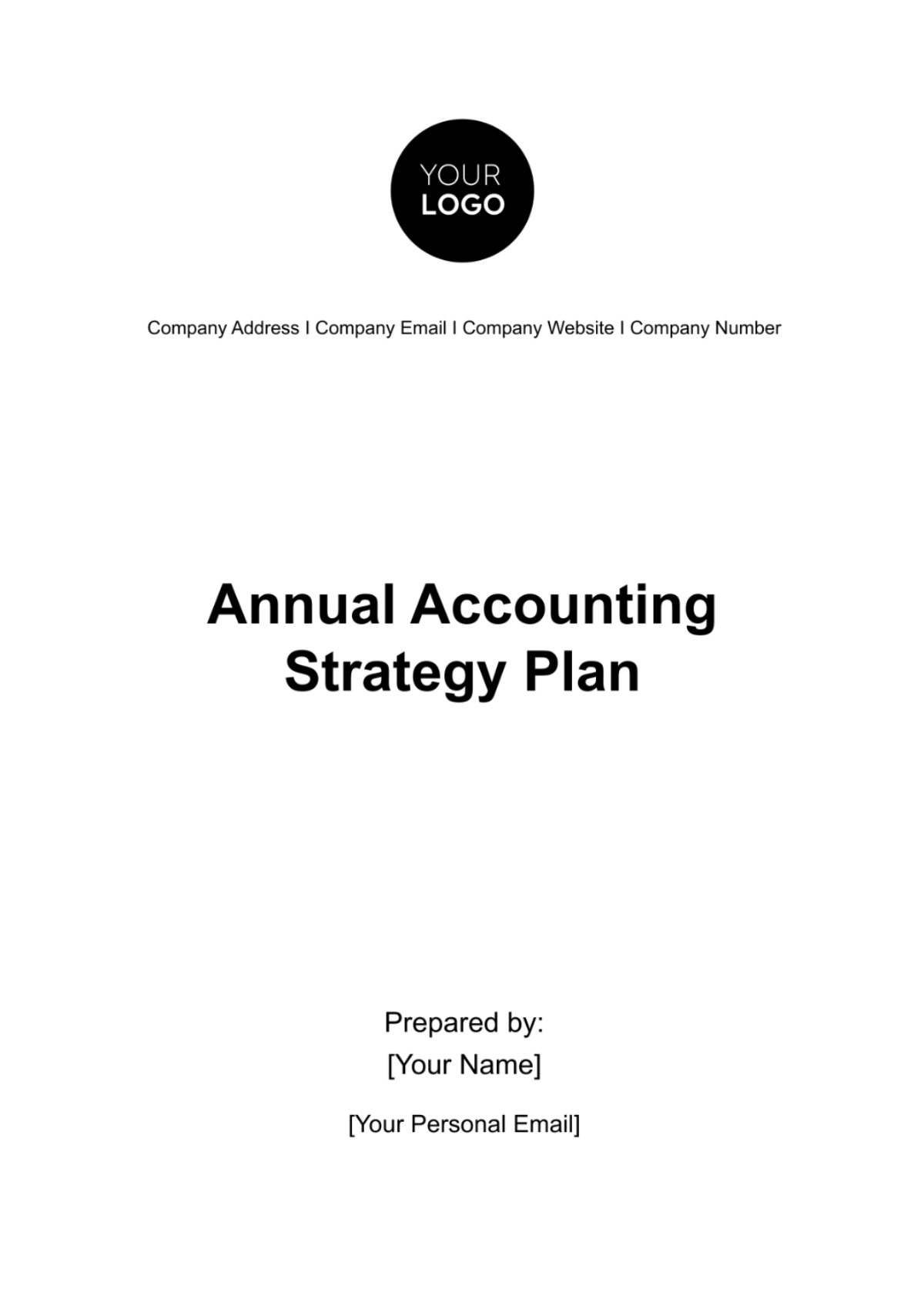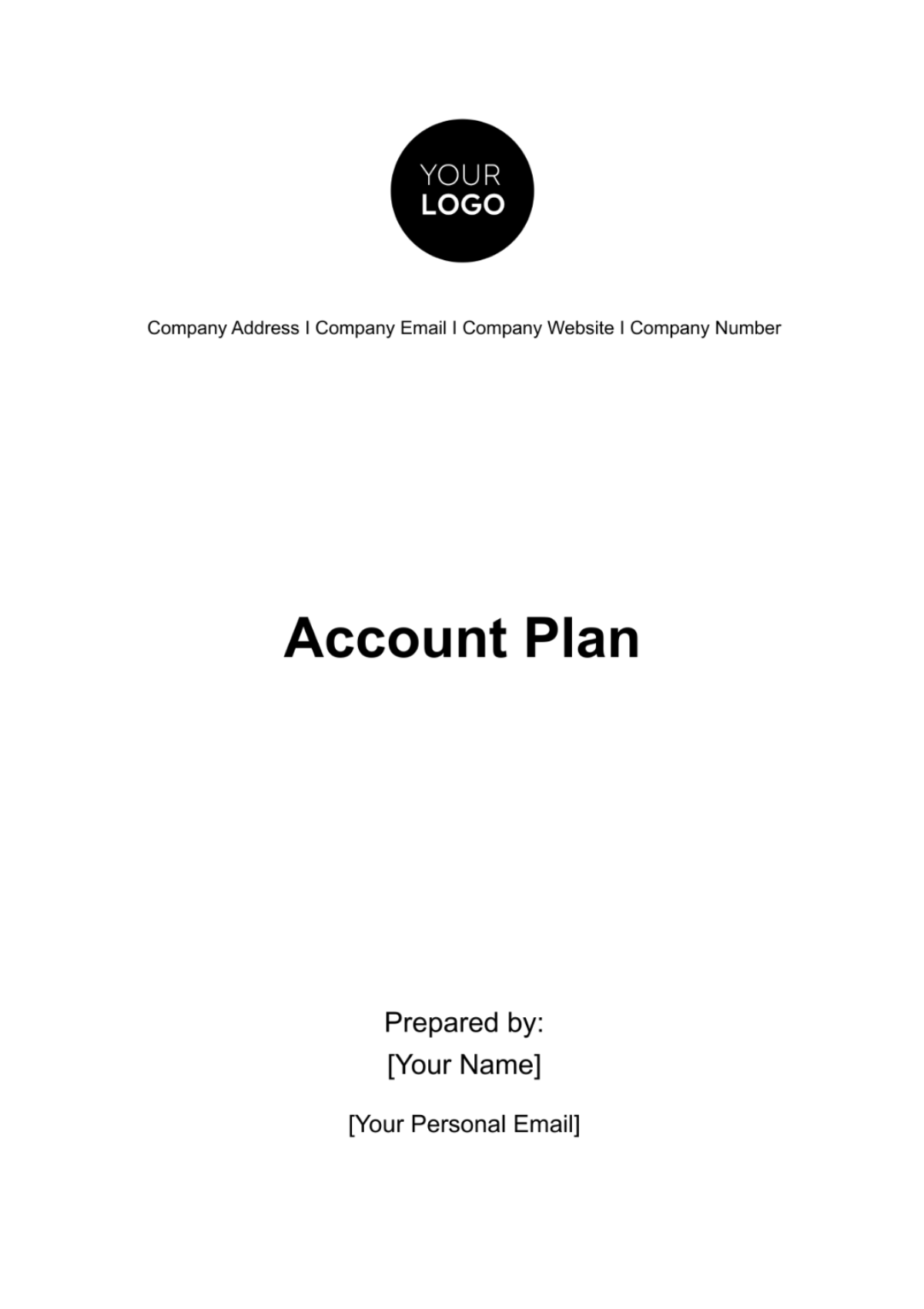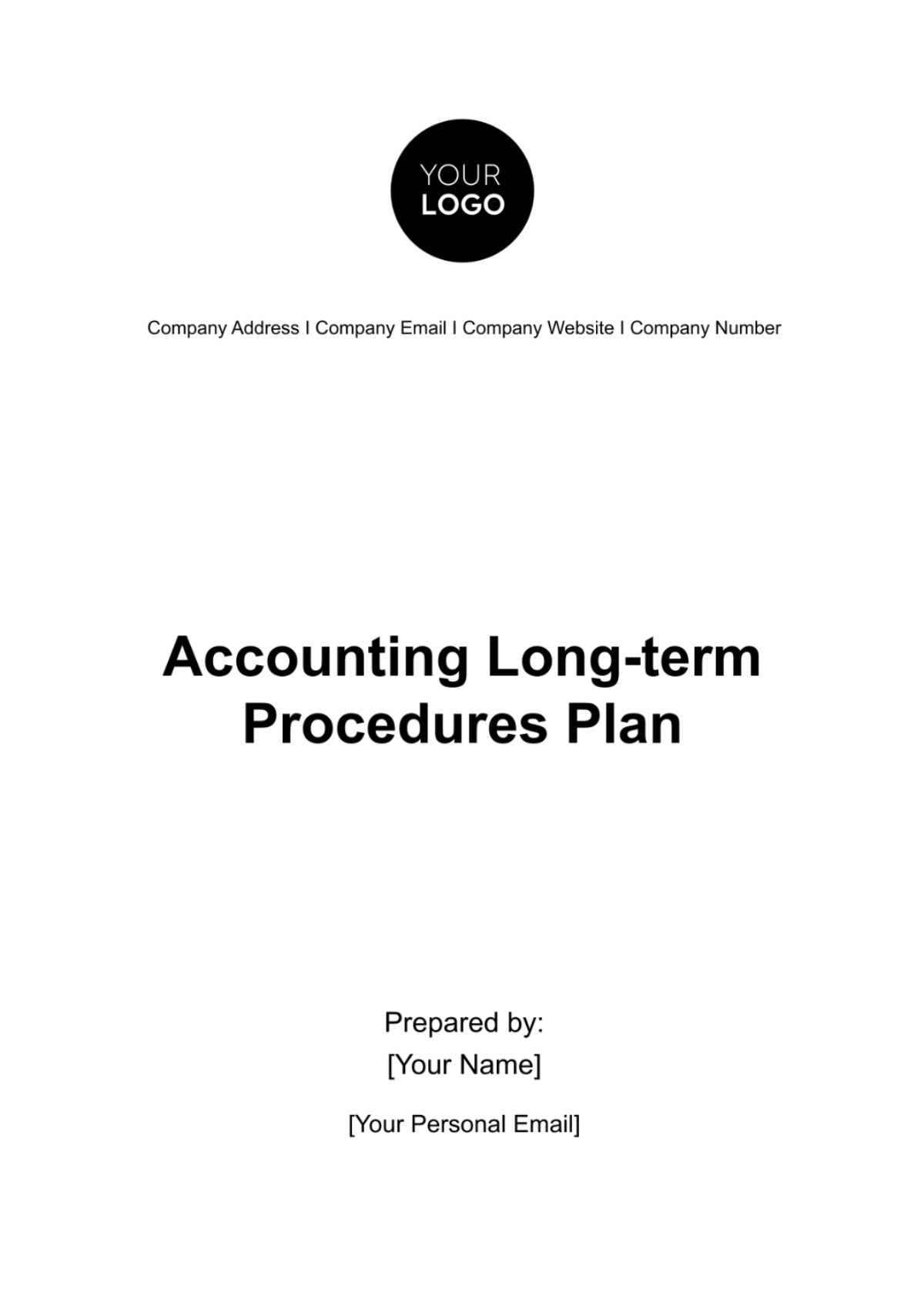Account Plan
Executive Summary
This Account Plan outlines our strategic approach for managing and growing our relationship with one of our key clients over the next fiscal year. The plan has been developed with a thorough understanding of the client's business needs, market dynamics, and our organizational capabilities.
Our primary objective is to strengthen our partnership with the client, enhancing their satisfaction and loyalty, while also achieving a targeted [00]% increase in sales revenue from this account. This growth will be pursued through a combination of upselling our new product line and optimizing the existing service delivery.
Key strategies include personalized service offerings, leveraging data analytics for tailored solutions, and a focused approach to relationship management. A SWOT analysis has identified significant opportunities for growth, despite a competitive market environment. Our plan includes specific initiatives and action items designed to capitalize on these opportunities.
Financial projections indicate a potential increase in revenue from $[000,000] to $[000,000] with an anticipated profit margin improvement of [0]%. These figures are grounded in a realistic appraisal of market conditions and our proven capabilities in delivering high-value solutions to the client.
The implementation of this plan requires coordinated efforts across sales, service, and product development teams. Regular reviews are scheduled to monitor progress and adjust strategies as needed to ensure we meet or exceed our set objectives.
Client/Account Overview
The client is a mid-sized enterprise specializing in eco-friendly home products, with a strong market presence in the North American region. Established in [Year], they have shown a consistent growth trajectory, largely due to their commitment to sustainability and innovation in product design.
Key Stakeholders
CEO: Visionary leader focused on sustainable growth.
CFO: Key decision-maker in financial planning and budget allocation.
Purchasing Manager: Primary contact for procurement and vendor relations.
The client has been associated with us since [Year], primarily utilizing our range of marketing and supply chain solutions. Over the years, we have developed a deep understanding of their business model, operational challenges, and market positioning, making us well-equipped to cater to their evolving needs.
Objectives and Goals
To enhance our partnership by delivering exceptional service and demonstrating a deep understanding of the client's business needs and challenges.
To achieve a [00]% increase in sales revenue from this account, raising the annual figure from $[000,000] to $[000,000].
Introduce and promote our new line of eco-friendly packaging solutions to the client, aiming for a [00]% adoption rate in the first year.
Improve service delivery efficiency by [00]% through process optimization and the integration of advanced analytics tools.
Establish a loyalty program tailored to the client's purchasing patterns, aiming to increase repeat business by [00]%.
Improve the profit margin from this account from [00]% to [00]% through strategic upselling and cost optimization.
Market Analysis
This section provides an in-depth analysis of the current market in which the client operates, focusing on competition, trends, and potential opportunities. Understanding these elements is crucial for strategically positioning our services and products to meet the client's needs effectively.
Competition
Competitor | Market Share | Key Strengths | Key Weaknesses |
EcoPure Solutions | 25% | Innovative products | Higher pricing |
Market Trends and Opportunities
Increasing consumer preference for eco-friendly products.
Growing use of technology in product design and marketing.
Emerging markets showing increased interest in sustainable home products.
Rise in online shopping, offering potential for direct-to-consumer sales.
SWOT Analysis
This SWOT Analysis outlines the internal strengths and weaknesses of our approach to the client's account, as well as the external opportunities and threats that could impact our strategy.
Strengths (S) | Weaknesses (W) | Opportunities (O) | Threats (T) |
Strong client rapport | Limited product line | Expansion in eco-market | Intense market competition |
Advanced analytics | Resource constraints | Technological advancements | Changing consumer preferences |
Strengths: Our established relationship with the client provides a foundation for trust and continued collaboration. Utilization of advanced analytics tools enhances our ability to tailor services to the client’s specific needs.
Weaknesses: A limited product line may restrict our ability to fully meet the diverse needs of the client. Existing resource constraints could limit our capacity for rapid expansion or customization.
Opportunities: The expanding market for eco-friendly products aligns with our client’s business, presenting opportunities for growth. Advancements in technology can be leveraged to improve product offerings and service delivery.
Threats: The highly competitive market necessitates continuous innovation and adaptation to maintain a competitive edge. Fluctuating consumer preferences in the eco-product space require agility in marketing and product development.
Key Account Metrics
This section outlines the key metrics and KPIs (Key Performance Indicators) that will be used to track and evaluate the performance and progress of our account management strategies. These metrics are essential for ensuring alignment with our objectives and providing a clear measure of success.
Metric | Target KPI | Description |
Revenue Growth | Increase by [00]% YOY | Year-over-year growth in revenue from the client. |
Client Satisfaction Score | Achieve a score of [00]% or above | Based on regular client feedback surveys. |
Product Adoption Rate | [00]% adoption of new products | Rate at which new products are adopted by the client. |
Service Efficiency Improvement | [00]% improvement | Measured by reduced time in service delivery. |
Repeat Business Rate | Increase by [00]% | Percentage of repeat business from the client. |
Relationship Management
Effective relationship management is pivotal to the success of our account strategy. This section details our approach to nurturing and strengthening our relationships with key stakeholders within the client's organization. The strategies for relationship management include:
Regular Communication: Establish a schedule for regular meetings and check-ins with key stakeholders to ensure open lines of communication and address any concerns promptly.
Customized Service Offerings: Tailor our services and products to meet the specific needs and preferences of the client, demonstrating our commitment to their unique challenges and goals.
Client Feedback Mechanism: Implement a systematic approach to collect and analyze feedback from the client, using this information to improve our services and address any issues.
Stakeholder Engagement: Identify and engage with all key stakeholders, understanding their individual roles and influence within the client's organization, and ensuring they are kept informed and involved in relevant decisions.
Value-Added Services: Provide additional services or insights that go beyond the contract scope, such as industry updates, market trends analysis, and strategic advisories.
Client Appreciation Initiatives: Organize periodic appreciation events or gestures to acknowledge the client's business and reinforce the relationship.
Service and Product Strategy
Our service and product strategy is tailored to meet the evolving needs of our client, ensuring that we provide solutions that are both relevant and valuable. This section details the key products and services we offer, along with the specific customizations or adjustments made to align with the client's unique requirements. The strategies include:
Eco-Friendly Packaging Solutions: Offering a range of biodegradable and recyclable materials, tailored to the client's product dimensions and branding requirements.
Digital Marketing Services: Developing targeted marketing campaigns focusing on sustainability and eco-conscious consumers, leveraging data analytics for personalized content and strategies.
Supply Chain Optimization Consultancy: Providing specialized consultancy to streamline the client's supply chain for efficiency, with an emphasis on reducing environmental impact and costs.
Sales and Growth Strategy
Our sales and growth strategy is designed to not only meet our set targets but also to facilitate sustainable growth for our client. It encompasses a blend of innovative approaches and proven tactics. The strategies include:
Cross-Selling and Upselling: Actively promoting new product lines during regular interactions, and identifying opportunities to upsell enhanced service packages.
Referral Program: Implementing a referral incentive program, encouraging the client to refer other businesses, potentially expanding our market reach.
Customer Success Stories: Showcasing the success stories and testimonials from the client, particularly how our products and services have contributed to their growth and sustainability goals.
Digital Outreach: Leveraging digital platforms for targeted advertising and content marketing, aimed at increasing brand visibility and engagement.
Strategic Partnerships: Forming partnerships with other eco-friendly product manufacturers or service providers, creating a synergistic effect that can lead to new business avenues.
Continuous Market Research: Regularly conducting market research to stay ahead of industry trends, ensuring that our offerings remain relevant and competitive.
Risk Management
In managing our client's account, identifying potential risks and implementing effective mitigation strategies is crucial for maintaining stability and achieving our objectives. This section details the key risks associated with our account strategy, their likelihood and impact, and the measures we have in place to mitigate these risks.
Risk | Likelihood | Impact | Mitigation Strategy |
Market Competition Intensification | Medium | High | Diversify service offerings, enhance unique features |
Action Plan
The action plan outlines specific tasks, timelines, and responsibilities to achieve our set objectives and targets. It serves as a roadmap for the implementation of our strategies.
Task | Month | Responsibilities | Resources |
Launch Eco-Friendly Packaging Line | Month 1-2 | Sales and Product Teams | Marketing Materials |
Financial Projections and Budget
This section provides a forward-looking view of the financial outcomes we anticipate from implementing this account plan. It includes projections for revenue, profit margins, and the budget required to execute the strategies outlined.
Year | Projected Revenue ($USD) | Projected Profit Margin (%) | Budget Requirement ($USD) |
2084 | 600,000 | 23 | 100,000 |
The increase in revenue is expected due to the expansion of product lines and enhanced marketing strategies.
The rise in profit margin reflects anticipated efficiencies in service delivery and supply chain management.
The budget requirement includes investments in marketing, technology upgrades, and new product development.
Review and Adaptation Mechanisms
To ensure the success and relevance of this account plan, we have established processes for regular review and adaptation. The mechanisms include:
Quarterly Performance Reviews: Conduct comprehensive assessments of our progress against KPIs and financial targets every quarter.
Client Feedback Sessions: Hold bi-annual meetings with the client to gather feedback and discuss any changing needs or challenges.
Internal Strategy Sessions: Arrange monthly meetings within our team to discuss the effectiveness of strategies and brainstorm on improvements.
Market Trend Analysis: Continuously monitor market trends and consumer behaviors, adjusting our strategies to stay ahead of changes.
Technology and Process Evaluation: Regularly evaluate our technological tools and processes for potential upgrades or optimizations.
Financial Review: Bi-annual financial reviews to analyze budget usage, ROI, and make necessary adjustments.


